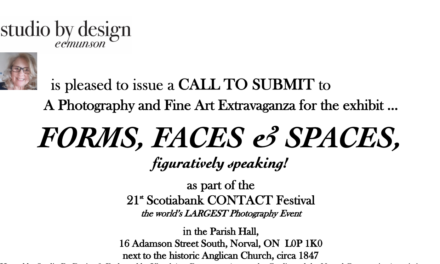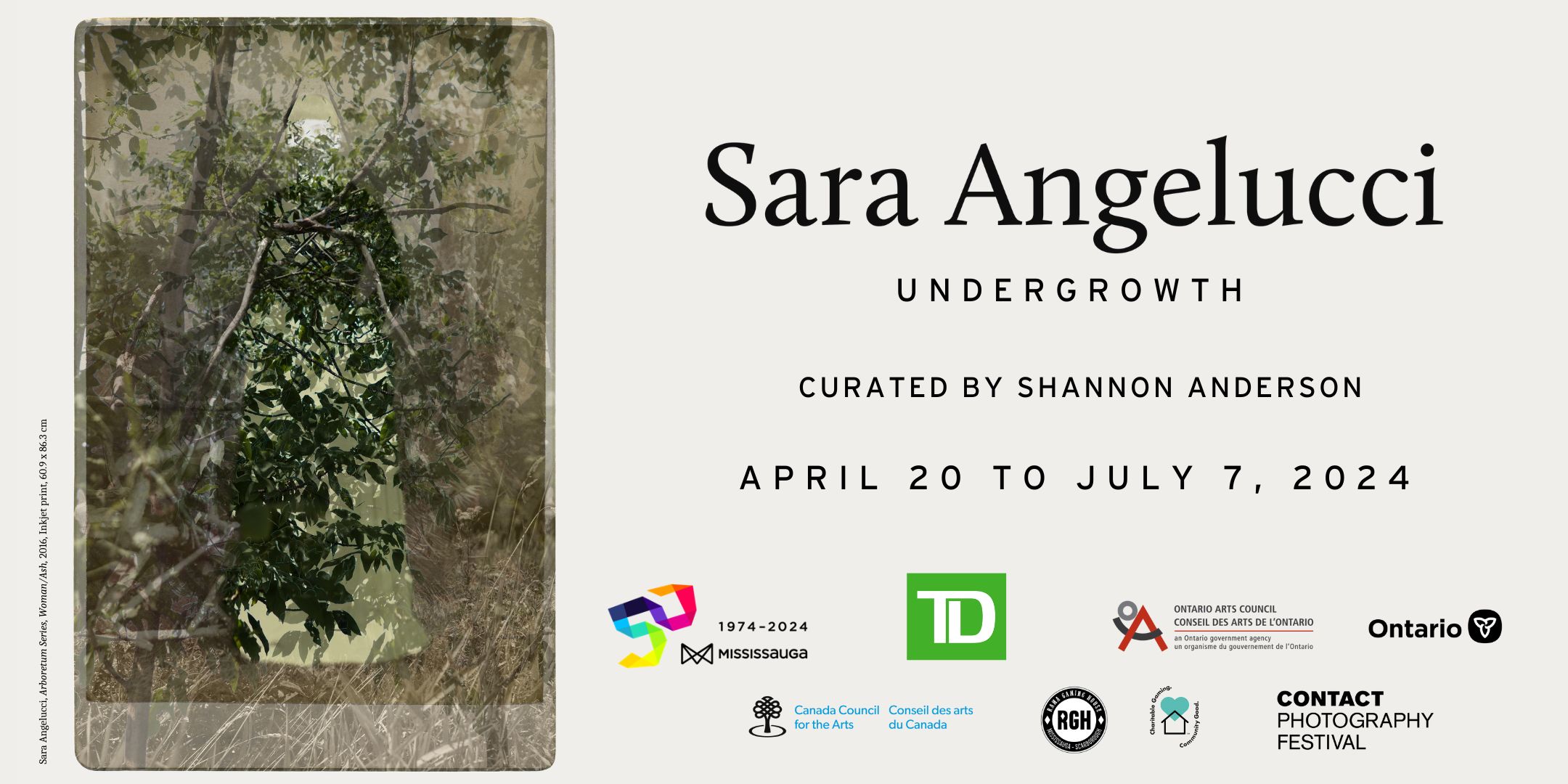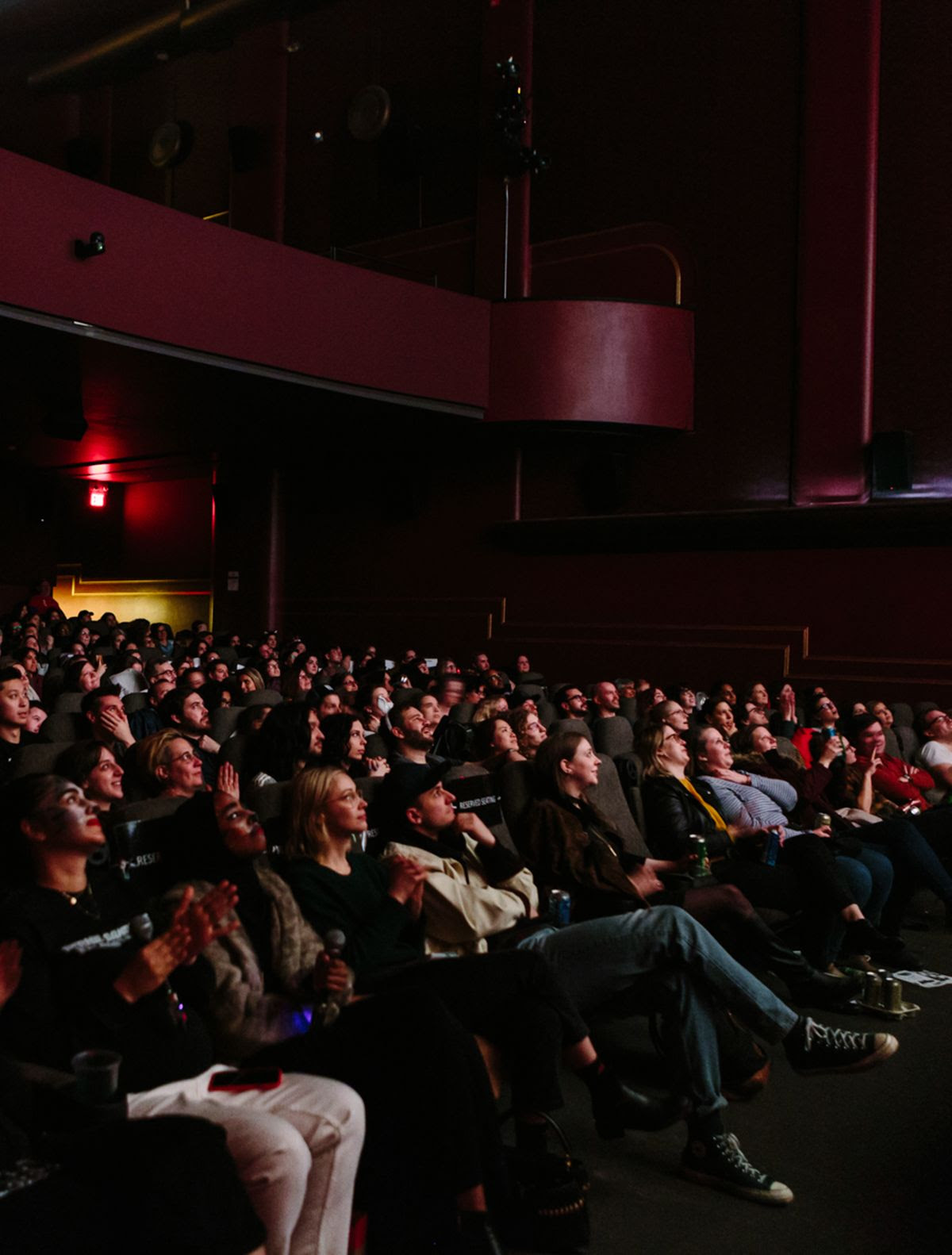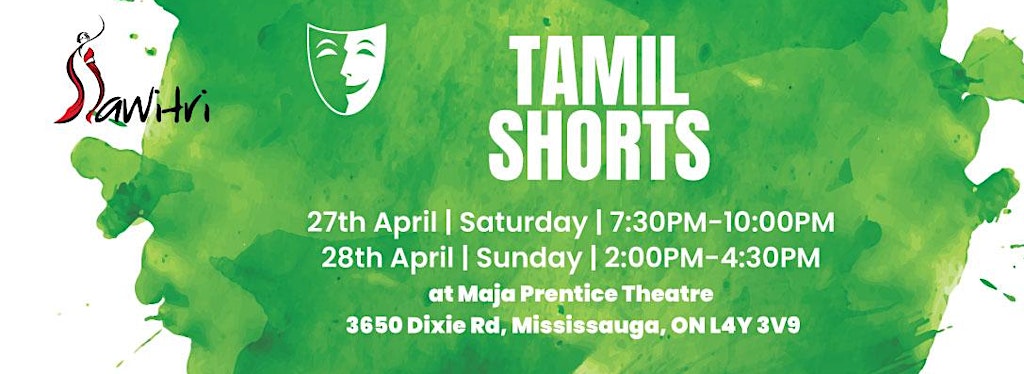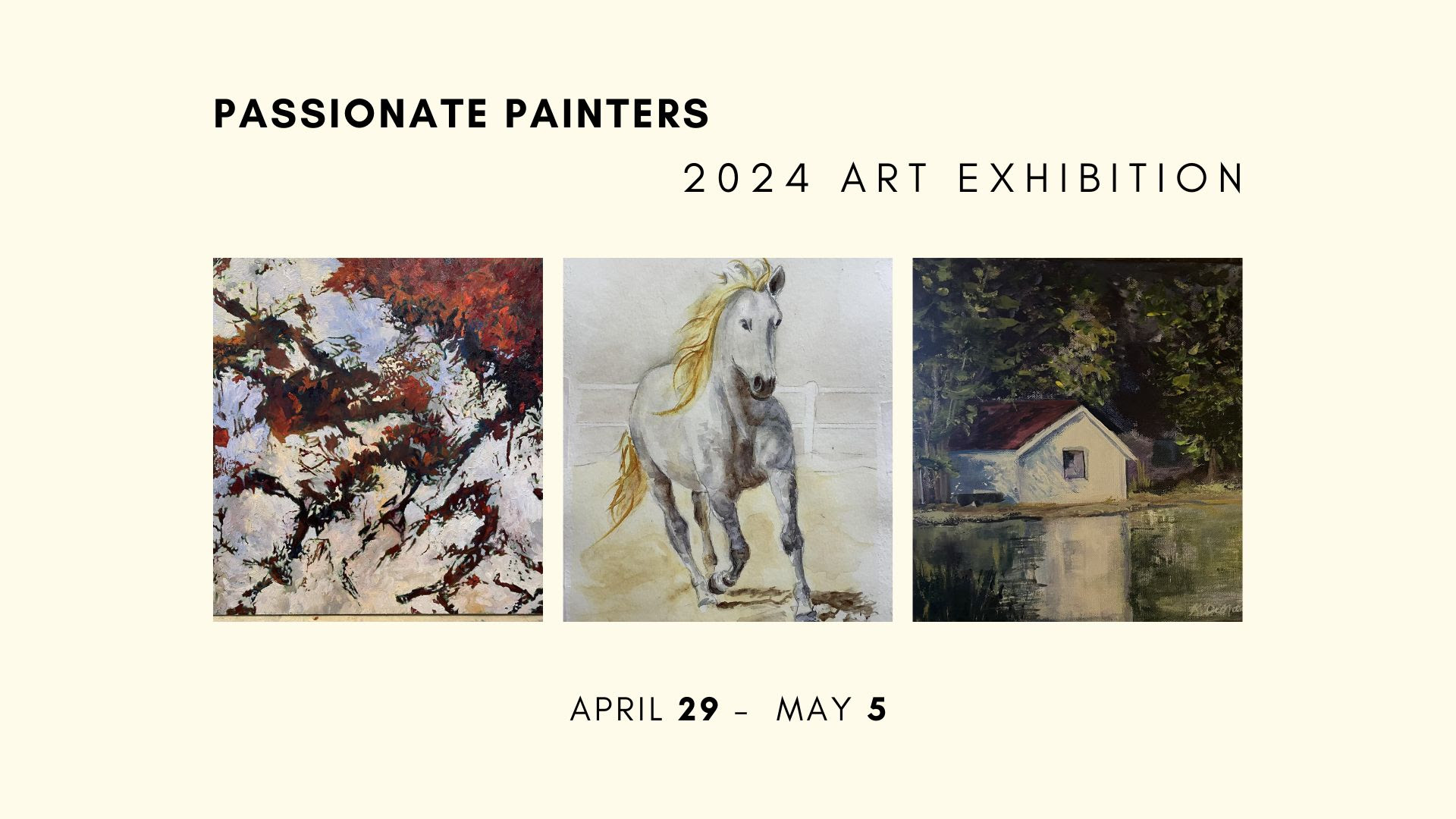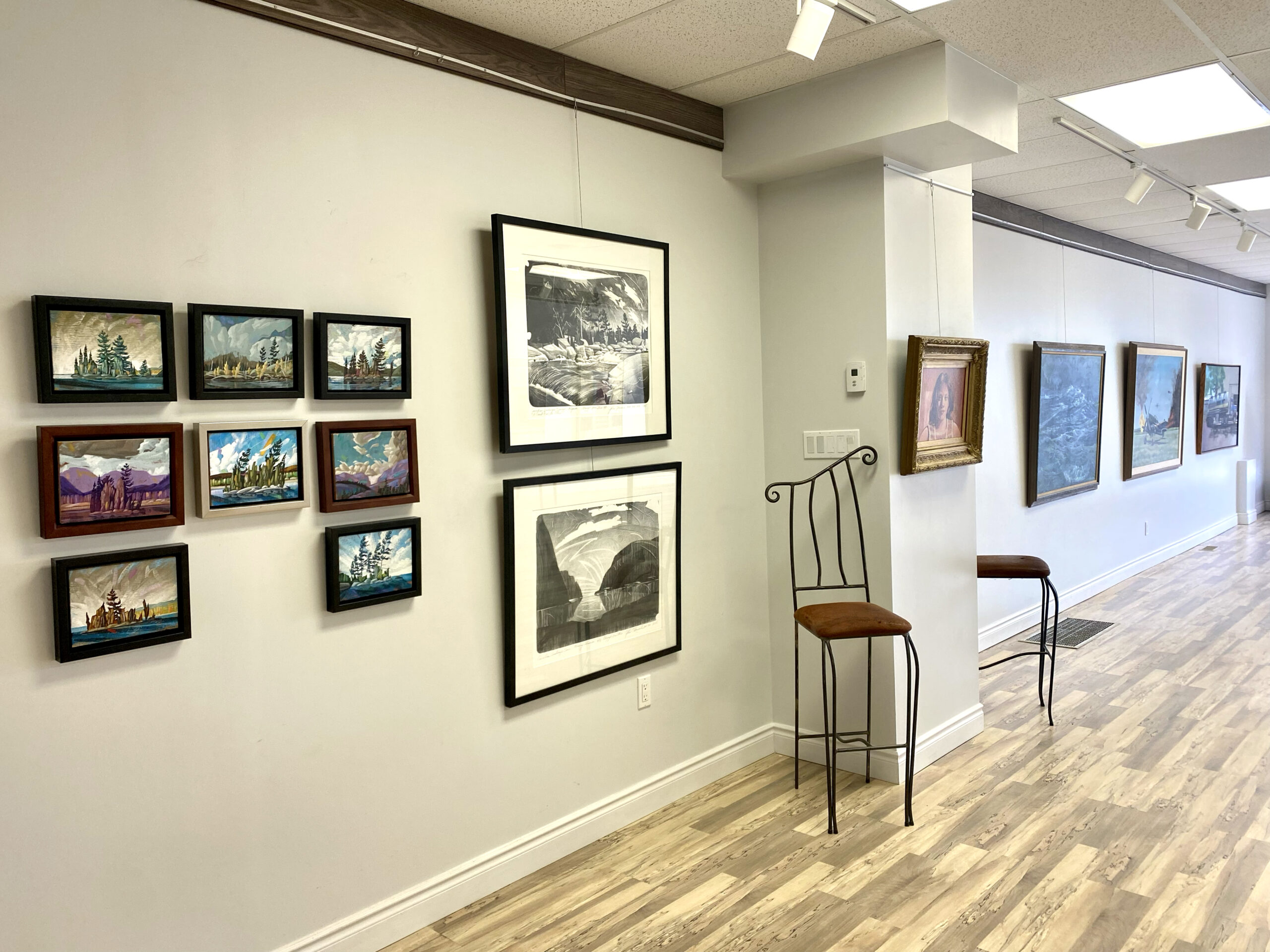Meet 13 emerging artists who turned a challenging time into a creative opportunity

Graduation’s a time of transition and uncertainty no matter the era, but as a second pandemic school year was coming to a close, CBC Arts reached out to institutions around the country this spring, eager to see how art students had fared (and hopefully thrived) in their final semesters.
COVID-19 measures have affected each region differently, and the experience in, say, Nova Scotia can hardly compare to student life in Ontario or Alberta or the Yukon. Still, no matter the location, marking this turning point IRL is not a real option for most graduates. As in 2020, year-end exhibitions are online or accessible through timed-entry only, if they’re happening at all. So here, we’d like to share work by students who’ve finished 2021 at the top of their classes.
Some are award winners, and many more were specially recommended to CBC Arts by instructors and faculty. It should be noted that while their fields of study varied, those featured here have all chosen to work in photography for their final projects. These collected images are selections from those year-end works. In their variety, we’d like to think they provide a snapshot of this Class of 2021: students of different backgrounds and interests who’ve all succeeded in finding their creative potential in this restrictive moment.
Kinzi Dempsey | Ruth A. Curry | Jana Ghimire | Jenell Bear | Branden Dwyer | Melissa Naef | Hannah Mahan | Sarah Thompson | Emily Kirsch | Emily R. Anderson | Gabrielle Tyrie | Siyi Wang | Delaney Soumang

Kinzi Dempsey was settling into a quiet, stay-at-home lifestyle before quarantine officially began. When the pandemic hit, the OCAD University photography major was taking a break from school in Toronto and had moved back in with her family. Home, for Dempsey, is Cairo, Egypt. And though she could have extended her academic breather, the reality of remote-learning motivated her to get things done. “It was not the plan, but here we are,” says Dempsey. Her final project (Belraha – بالراحة,) was the Photography Medal Winner at the 2021 edition of OCAD U’s GradEx.
The piece blends a variety of disciplines: photography, poetry, video, zine-making and performance. And broadly speaking, it reflects Dempsey’s research on hybrid identities, including her own complex experience. She’s the child of a Canadian father and Egyptian mother, raised in Cairo, but studying in Toronto … albeit virtually from Egypt for the final stretch.
The GradEx Photography Jury shared this comment with CBC Arts: “As jurors, we were taken by interdisciplinary artist Kinzi Dempsey’s series Belraha – بالراحة and her thoughtful and skillful engagement with the intertwining concepts of diasporic identity, mutability of landscape, limits of language, and the vulnerability involved in communication. Her approach to expanded photography, which incorporates poetry, video and stills, connects with the uncertain times we live in and questions how images and language can build community.”
That image, it kind of encapsulates the feeling of being alone.– Kinzi Dempsey, artist
The themes explored in Belraha – بالراحة, would have emerged no matter where she spent her last semester, Dempsey says. Still, living in Cairo offered her a creative opportunity she couldn’t have seized upon in Canada. “From a photographic point of view, it’s definitely been really fun to just be able to go to the desert,” says Dempsey. This selection, a self-portrait, was taken in the Wadi Degla Protectorates. “The pictures make it look really remote,” says Dempsey. It’s actually roughly 30 minutes from the city, and “it can be kind of popping on some weekends,” she laughs.
Still, desolate landscapes figure strongly in her final body of work. “That image, it kind of encapsulates the feeling of being alone,” says Dempsey — an idea she relates to the broader metaphysical quandary that her project pokes at, namely “what sort of ethnic identity or space I occupy.”
“That image, I think, is probably the simplest visual form of trying to illustrate that feeling of, like, OK! I’m here!”
—Leah Collins
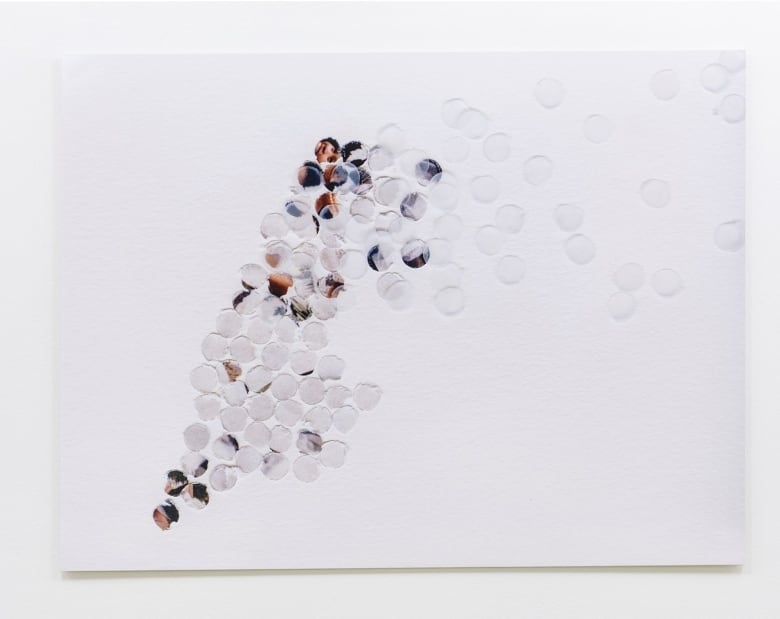
Ruth A. Curry looks back on the COVID years of her BFA and considers herself lucky. Going to a “smaller school” in Sackville, N.B., she says, with little more than a dozen other students, class was a sort of hybrid situation, mixing remote learning and the Before Times way of doing things. Students could still gather in person and access their studios, although there were limitations, of course. “At first, I think it was a hard adjustment,” says Curry. She knew that pandemic measures would probably hamper her ability to pursue things like cross-border photo trips or shoots with loads of people. “It made me be imaginative with limited materials,” she says, and for her final project, she raided family albums, reworking found photos to tell a new, personal story.
“In general, I create work based on emotional themes about coming from a mixed Filipino-Canadian home,” says Curry, whose mother immigrated to Nova Scotia from the Philippines. In her thesis project, Pamily (2020-21), she ponders her identity, inserting her own narrative in Kodak moments from her parents’ lives.
In this selection, Curry uses a hole-punch and cloudy layers of Mylar film to deconstruct a photo of her mother as a bride. “That was my mom’s pivotal moment of deciding she was going to stay here in Canada,” says Curry. “As exciting as it was to move here and start her life and start her family, at the time, she lost a lot of her Filipino culture. […] The wedding — for me, at least — symbolizes that shift and that permanence, and how that decision later on affected me and how I didn’t really have those traditions.”
Karen Stentaford, assistant professor at Mount Allison University’s Pierre Lassonde School of Fine Arts nominated Curry, who spent roughly two years developing Pamily. “Each hole punch, cut shape, introduction of new materials and reconfiguration is executed with consideration and driven by her feelings,” writes Stentaford. “Without question, Ruth demonstrates a conceptual rigour in her practice. She pushes the boundaries of the photographic medium and emphasizes the objecthood of each work.
—LC

In the autumn of 2020, Jana Ghimire gathered around a screen with her family in North Vancouver. On the other side of the transmission was her grandmother, thousands of kilometres away in Nepal. Everyone was together to say goodbye, and if the circumstances were different, the family would have flown to be by her grandmother’s side, says Ghimire. But like many whose loved ones have passed on during the pandemic, they could only connect through a video call. “It was a very strange experience,” says Ghimire, but she says she also felt unexpectedly grateful for those moments of mediated contact. “It was interesting to me that basically a video call could be the site of something so intense and important to our family.” She reflects on that memory of loss in Leaving through the eyes, a series of woven photographs which appear in Supercharged, the grad exhibition at The School of Contemporary Arts at Simon Fraser University in Vancouver.
In this selection, Ghimire combines three screenshots taken after her grandmother’s passing, and like the other works in her series, the composition takes the same 16:9 ratio as a phone screen. The colours are faded and the composition is scrambled, suggesting a dreamlike state, but also the confusion and dissociation Ghimire felt during the stops and starts of the video call. “What you see are these almost watercolour-like images that are blurred. And in a way, it could almost be what [my grandmother] saw.”
It was interesting to me that basically a video call could be the site of something so intense and important to our family.– Jana Ghimire, artist
In nominating Ghimire, SFU term lecturer Kathy Slade says that Leaving through the eyes “simultaneously deconstructs and reconstructs a moment of loss during the pandemic.” Writes Slade: “This image of private grieving is on public display yet is protected; the particulars are kept safe through abstraction formed by a glitch or a lag in the smartphone’s video feed.”
Beyond school, Ghimire says she dreams of maintaining the studio practice she began developing at SFU, and maybe renting a shared studio some day — though social distancing will likely delay that goal. In the meantime, her focus is work. Ghimire was recently made a curatorial assistant at Vancouver’s Polygon Gallery. “I never in a million years expected that I would have a job related to my field before I even graduated, so I’m so happy about that.”
—LC

When Jenell Bear graduates from Concordia University this spring with a BFA in photography it will be her second post-secondary diploma after completing the graphic design program at Dawson College. But Bear does not plan on stopping her education here. Originally from Cold Lake, Alta., Bear loves Concordia so much that she’s already decided to spend another three years at the Montreal school, this time returning to study design. “The facilities are incredible. The people are incredible. I love all the students that I meet. I just had to come back and do another three years of something,” Bear says.
Still, she talks about the “indecisiveness” of her academic journey — a theme that inspired her thesis project, One Job Forever. It’s a series of digital self-portraits that imagine the lives Bear could have led if she had made different choices. “I’m a construction worker, a chef, a stay-at-home mom,” says Bear, describing the roles she plays in her photos, “things that I’ll probably never be in this life but that I could have been.”
In this photograph, Social Media Addict, Bear imagines what life could look like when she gets home from work. Although she includes lots of specific details in the photos, she’s interested in what stories people read into the images. “People can kind of apply their own experience to it.”
Aside from continuing her studies at Concordia, Bear is looking forward to finally being able to print her work when pandemic restrictions end. For months, the facilities have been closed. “I wasn’t really a big printer before. I was actually someone that was always like, ‘Oh what’s the point of printing?’ But once it gets taken away from you. Wow. Like, the difference it makes when you don’t get to see your prints!”
Marisa Portolese, associate professor of photography at Concordia nominated Bear. She praises the artist for her incredible Photoshop skills and impressive talent for creating convincing and compelling images. “She received an A+ for the class and is one of the most accomplished students in her graduating year.”
—Mercedes Grundy

“Escapism’s always been something that I’ve seen as kind of a necessity in my life,” says Branden Dwyer. And escapism — as trifling as it might seem — is ultimately what led him to study photography. “I dealt with substance abuse issues throughout my life, and when I was getting sober, photography became one of those things that I just became obsessed with,” Dwyer explains. “People were telling me, ‘you need to go to school for this,'” and this spring, he graduates from NSCAD University’s BFA program with a major in photography. His thesis project, To Escape, is his way of representing common diversions: video games, music, alcohol. This selection, for example, is a self-portrait of the artist and his favourite books, staged inside the Port Campus studios in Halifax.
Dwyer’s creative process wasn’t hampered by pandemic restrictions, though he says virtual lectures were hardly ideal. Still, Adrian Fish (associate professor and chair of the media arts division at NSCAD) sees a timely link to the COVID era in Dwyer’s To Escape. Nominating his student, Fish writes: “Although Branden’s intention was to address the theme of escapism, his striking visual images contrasting home and institutional spaces suit the pandemic zeitgeist by addressing the conflation of private and public space.”
—LC

Melissa Naef was on Yukon’s Dempster Highway last October, just outside of Tombstone Territorial Park. Winter had already arrived, and with it, a blanket of snow. “But this little plant just decided that it wanted to keep going and enjoy the sun a little longer,” says Naef, talking about why she absolutely had to capture it. There was something about its persistent, cheerful attitude that felt familiar.
Naef has spent most of her life in the Dawson City area. “Lots of people have very — not wrong ideas, but very misconstrued ideas of what it is to live in the North. They think we live in the dark and it’s snow all year,” says Naef. “But honestly, the happiest people I’ve ever met are here in the Yukon and they just live their life as they want.”
At the pandemic’s outset, Naef was actually based out of Ottawa. School had taken her South, first to study history, then public relations — and she thought she’d stay to start her career. But in the spring of 2020, she was 22 and unemployed. “Why not do art school for a year at home?” Naef asked herself, and she enrolled at the Yukon School of Visual Arts (SOVA) in Dawson City.
Lots of people have very — not wrong ideas, but very misconstrued ideas of what it is to live in the north.– Melissa Naef, artist
Naef’s class was relatively unaffected by pandemic restrictions. She says she was able to learn in-class all year. “I couldn’t even imagine doing it online,” she says. “Wearing masks: I think that’s the biggest thing that we’re all adjusting to.”
Her program, unlike the others mentioned in this piece, is a foundation year. Students like Naef can put their credits toward a degree elsewhere. Her intention is to study photography at NSCAD, though because of COVID, she wants to defer that plan for the time being, instead focusing on applying for residencies closer to home.
And Naef’s affection for the North is one of the reasons Aubyn O’Grady, program director at SOVA, recommended her work. As she writes: “Melissa’s photos are full of care for the place she grew up, and her work captures what life is like up here far beyond, and far more tenderly, than the vast expanses of wilderness we are known for.”
—LC

With graduation barely behind her, Hannah Mahan is already chasing a career in commercial photography. The Calgary native runs her own company for shooting weddings, portraits — “lifestyle/editorial stuff” — a job that she says she adores. But in this selection, taken from her final portfolio, Mahan captures a less self-assured moment from her pandemic year.
Mahan completed her B.Des. at the Alberta University of the Arts this spring, working from the same house where she was born. This picture, she explains, was taken for a class assignment, and the idea for the photo illustration came to her while taking a walk. “I was listening to ‘How’ by John Lennon,” she says. “The lyrics are basically just this character questioning how they can move forward, not really sure what direction they’re facing. […] I felt like I could relate to that because I was graduating this spring. I was like, holy crap! I have my whole life ahead of me. Like, what’s after graduation? I’m not sure.”
Associate professor Mitch Kern and photography program lead John Gaucher put Mahan’s name forward. “In addition to achieving technical and scholarly excellence in her work, she has been able to achieve outstanding results because of her people skills and personality,” writes Gaucher. “Hannah’s perspective is a celebration of life,” writes Kern. “It’s humanistic, in that her images showcase the human experience in families and in local Albertan communities. It’s optimistic, in that it depicts the best of who we are.”
—LC

Sarah Thompson’s image Ill Reality is her favourite selection from her BFA thesis project at the University of Manitoba, Made Broken. It’s a deeply personal work for Thompson, who never shies away from sharing personal aspects of her life in her art. Ill Reality shows the view from the artist’s bed when she wakes up: a collection of medications on the table by her window. Thompson lives with Ehlers-Danlos syndrome, a genetic condition that weakens the connective tissues in the body, and these medications are what keep her functioning.
Thompson takes the photographs using an analog camera, and then boils the film rolls in borax on the stovetop, a process she calls “film soup.” She then scans the negatives (which at this point look like crispy bacon, she says) to reveal the final images that are full of colour splotches and light auras.
“I see that image really as the full landscape of illness,” says Thompson. “I just allowed the film to tell me what it wanted to do and I listened to it and that’s the best way I can describe it.”
I see that image really as the full landscape of illness.– Sarah Thompson, artist
The “film soup” negatives remind Thompson of the bruises on her own body when she dislocates joints. “It’s also a talk of how the image is destroyed, yet still legible and still beautiful,” she says. She admits that there can be a sombre feeling associated with seeing all of her medications on the table, but there’s a positive side too. “It’s also not bad because these are the things that are keeping me going throughout my life,” she says. “And I’ve always used art as a form of coping.”
After graduating, Thompson is heading back to her native Chicago (she’s a dual citizen of Canada and the U.S.) where she plans to continue working as an artist.
Sarah Ciurysek, associate professor and associate director at the School of Art at the University of Manitoba nominated Thompson, calling her approach to photography “bold and unusual.” Writes Ciurysek: “The resulting images are captivating as well as conceptually significant, in that the process of deterioration parallels Sarah’s personal experience with chronic illness. I have nominated Sarah Thompson because her photo-based artwork is inventive and exciting, and because her depiction of disability includes strength as well as vulnerability, and is deserving of attention.”
—MG

When Emily Kirsch was a little kid growing up in Kelowna, B.C., they stashed recycling under their bed so they could stay up with a flashlight making art out of garbage. Kirsch has always had what they call an “inkling towards art,” and though they attended the University of Victoria to pursue a degree in Canadian history, that inkling (nurtured by a handful of encouraging professors) convinced them to also enrol in UVic’s visual arts BFA program.
Making art has become a playful and meditative practice for Kirsch, something that’s very important to them after suffering a significant concussion a year and a half ago. The injury diminished Kirsch’s ability to access information through reading and lectures, so they adopted a visual learning practice, working more with imagery and photos.
For their thesis project, Kirsch returned to a paint-pouring technique that they had experimented with two years earlier. The project, called Blobs, starts with Kirsch pouring acrylic paint into abstract compositions (blobs) that are inspired by microscopic life and patterns. As with their image Consume, the eight-inch paint pour is scanned and then printed at a larger size, around 54 inches tall.
The resulting works are like inkblot tests, allowing the viewer to see whatever they want in them. “I enjoy most when [people] look for things in them, or they find a sense of getting lost,” says Kirsch.
Jennifer Stillwell, associate professor in the Department of Visual Arts recommended Kirsch, who’s also nominated for the BMO 1st Art! Competition. She writes: “Emily Kirsch pays attention to every detail — image resolution, print surface and print scale are all integral to the content of their photographs.” Stillwell adds: “This meticulous process brings about details and depths not originally perceived and invites viewers to reconsider things at a cellular level.”
Now that Kirsch has graduated (with two degrees), they are busy selling artwork and thinking about grad school in the future. The rise of virtual schooling has made learning more accessible, and Kirsch hopes that trend continues post-pandemic. “Doing online classes actually is incredibly helpful,” says Kirsch. “I really hope that they allow for those options again in the future for other students like me who some days we can’t get out of bed, some days we can’t leave the house.”
—MG

For her graduating class exhibition, Emily R. Anderson presented Intrusion, a series of photographs taken at the Wild Cove Waste Disposal Site. The spot is 15 minutes from her home in Corner Brook, N.L. — just a quick trip across the bay. And yet, before last year, she’d never set foot there. That fact reminded her of just how oblivious people are to the cycle of consumption and waste. “The whole project is almost connecting people with their garbage,” says Anderson. “Every week, you put out your garbage at the end of your driveway or curbside and it goes away.” Out of sight, out of mind. “By showing people where their trash actually ends up, perhaps they can be more willing to kind of prevent so much of it from ending up in a landscape like this,” says Anderson.
The landscape could, in theory, stand in for anywhere, but Anderson notes its specificity. This scene (Red Shack) strikes her as being distinctly Newfoundland. (The utilitarian shed at centre even reminds her of a brightly painted salt box house.) “As someone who grew up in western Newfoundland, Emily’s photographs provide insightful counter-representations to the region’s own mythologies around landscape and relationship with the natural environment,” writes Marc Losier, an assistant professor in photography at Grenfell Campus, Memorial University of Newfoundland. (Losier and colleague D’Arcy Wilson nominated Anderson for this digital exhibition.)
Anderson says she plans to pursue an MFA, though she’s hesitant about continuing her studies in a pandemic. Whatever happens, she’s keen to continue the research she began on this project. “This theme of the landscape and the environment is a topic that will never end. It’s still important to look at and show other people and say, ‘hey, this is what’s going on.'”
—LC

At the start of the pandemic, Gabrielle Tyrie found herself consuming podcasts and YouTube videos about space and astronomy. At the time, she says, she wanted to be “totally off the planet.” But then one lecture brought her back to Earth. It was about the discovery of “the oldest piece of light” — an idea that ultimately inspired a thesis project of the same name.
“Immediately I was like, that’s my in between these two things. Because light, of course, is totally astronomical, but then totally essential for anything photographic,” says Tyrie.
The resulting project, The Oldest Piece of Light, combines astronomy and photography. The project lives online as an immersive web-based work of art integrating Tyrie’s writing with her photographs. She uses historical printing processes such as cyanotypes as well as 35mm photography, digital astrophotography and more.
When Tyrie applied to do her BFA in photography studies at Ryerson University in Toronto, her dream was to work in editorial fashion photography. But once she started the program, that goal completely changed. “I’m not sure if I was even aware at the time of applying that [the program is] so fine art and conceptually focused,” she says. “That dramatically shifted what I want to do,” she continues, “and now I’m much more interested in the art stuff. Not so much the commercial fashion stuff.”
Tyrie’s skills in the “art stuff” earned her graduating project some big awards: the Maximum Exposure Fourth Year SF Best in Show and the Arts and Letters Club of Toronto Foundation: Jack Gilbert Image Arts Award. Annie MacDonell, assistant professor at Ryerson’s School of Image Arts nominated Tyrie for this story. She writes: “We have selected Gabrielle’s work because it is a deeply researched and sensitively rendered project that travels between the oldest and newest technologies.” MacDonell continues: “Gabrielle’s work invites us to take a closer look because it is both deeply researched and profoundly personal and poetic.”
What’s next for Gabrielle? She’s launching her Etsy print shop and taking the summer off before thinking about grad school.
—MG

After months of remote schooling, Siyi Wang returned home to Xi’an, China in January 2021, resolved to spend her final semester with family. “If I was still in Canada, then I guess I would have not done this project,” says Wang, discussing this striking untitled image, and the thesis work it’s part of. For her final portfolio, Wang made a series exploring the connection (or, rather, the lack of connection) between people and the natural world. In this shot, an old friend poses near a waterfall in the Qinling Mountains, a spot Wang would visit with her dad as a very small child. “This image is special to me,” she says. “It was the very last shoot that I did as a student, and I was also able to incorporate the landscape of home.”
The winner of the Canon Best in Show award at Sheridan’s year-end Gradwork exhibition, Wang says she intends to return to Toronto this summer, and plans to pursue a master’s degree. The future is wide open, and after school she says she could see herself pursuing agency work or maybe teaching. Whatever happens: “I want to keep shooting for sure,” she says.
If I was still in Canada, then I guess I would not have done this project.– Siyi Wang, artist
Ryan Szulk, a Toronto-based photographer and one of the Gradwork exhibition judges, says Wang was the “unanimous winner” of this year’s competition. “When reviewing an emerging photographer’s work, what they shoot is far less important than how they shoot,” Szulk writes. “There is magic in [Wang’s] photography that transcends subject or genre. From her portraits to her still-lifes, and even into her streetscapes and captures of the mundane, there is a vitality, a sense of exploration, but most importantly for any artist, there is an enduring mystery present in all of her imagery. And it’s this playful sense of mystery that draws you in, keeps you coming back and stays with you long after viewing her work.”
—LC

Delaney Soumang came to her photography studies at Emily Carr University of Art and Design with a clear goal that she outlined in her application to the program: “to bring more awareness to the subconscious moments which can be overlooked or missed.” Her thesis project accomplishes just what she set out to do.
Soumang’s final work, Erratic Perspectives, lasers in on one moment of time, with a series of six images that offer different points of view.
We can only see what we’re given in a moment, in a perspective.– Delaney Soumang, artist
Her subjects are her neighbours in East Vancouver, and all of the photographs were taken during the pandemic. Set on the street and in family homes, the scene is a slice of the everyday during this strange time, and each carefully constructed photograph shows the moment from a different angle and perspective, offering more of the story.
“We can only see what we’re given in a moment, in a perspective,” says Soumang. “So it’s a way to consider what else is out there, what else is happening.”
Soumang finished her degree while parenting two children, and now that she’s graduated, she plans to continue working as an artist and investigating the ideas she explored in Erratic Perspectives, especially in relation to social work. “The appreciation of perspectives and understanding is something every age wants and is capable of reciprocating,” she says. “I hope my work would appeal aesthetically to any age, with subtle invitations which might keep the viewer investigating beyond the work and into their own perception.”
Birthe Piontek, assistant professor of photography in the Audain Faculty of Art at Emily Carr nominated Soumang, and applauds her for her meticulous research and execution. Piontek writes: “Whether working on urgent and relevant environmental topics such as climate change or looking into the pandemic’s impact on our daily lives, her attention to depth and detail always invites a closer look.”
—MG














